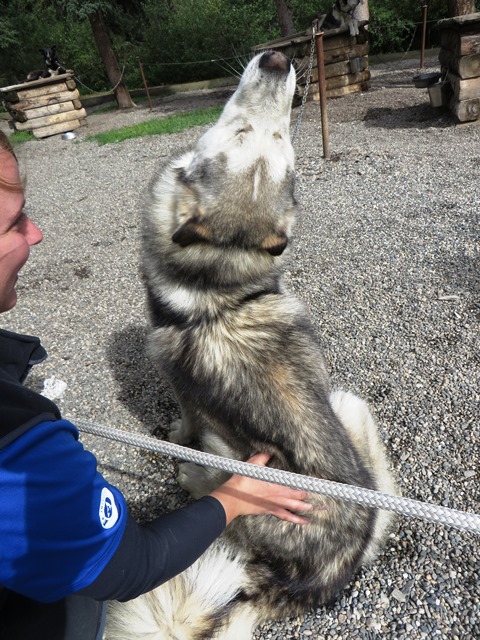
Mixtus turns his body towards the ropes to allow visitors to pet him.
Dogs have long been called man’s (and woman’s) best friend for a reason. There are studies showing that dogs possess the emotion to love us back; which is truly incredible. In addition, the social benefits of human and dog interaction can be long-term and rewarding.
How often have you gone home after a long day or stressful day at work only to be faithfully greeted with a smile by your dog? Dogs indeed cheer us up! Visitors often remark that a highlight of their trip to Denali was the opportunity to meet and interact with the sled dogs. Come meet them yourself and you will see why. How can we tell when a dog is seeking your attention? They will be alert and happy looking, such as Clove in this photo:
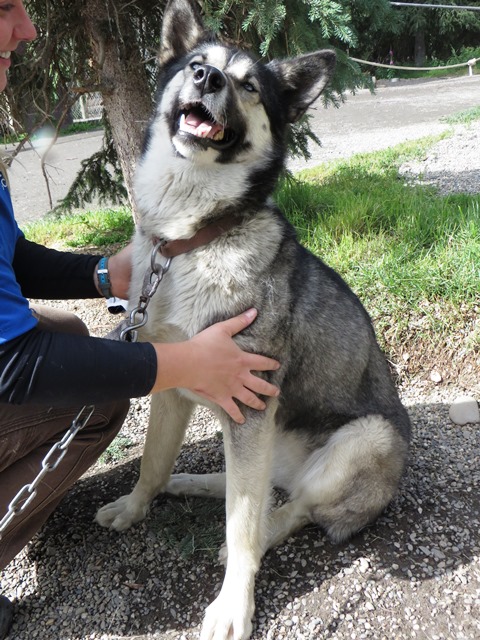
Clove looks happy receiving attention: she is sitting upright, alert, ears forward.
If a dog is in a pen, they will lean up against the fencing if they want attention. Feel free to scratch them through the fence, but do not use your fingers to lure them over to you as that encourages our dogs to nip them. You don't want to become "finger food"!
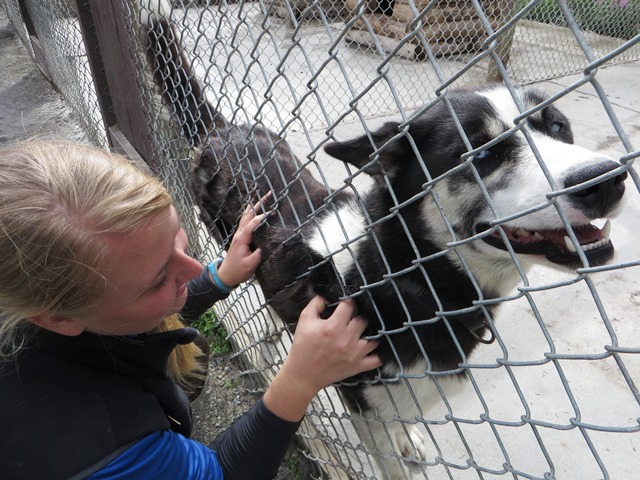
Prusik loves getting attention!
Whenever a dog is exhibiting strange behavior it usually means something is disturbing him/her. An example of this would be when you see a dog pacing back and forth, cowering from people, or hiding in his house.
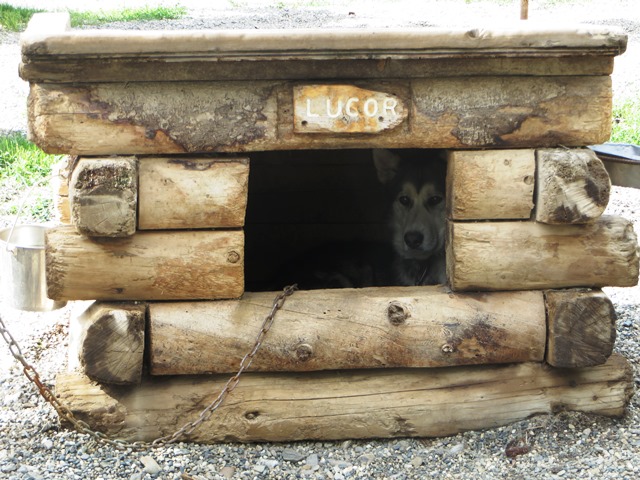
Lucor takes a break from his adoring fans.
These are signs the dog(s) aren’t in the mood for any visitor interaction. A much harder one to understand is when a dog is panting, barking, or yawning; these behaviors may appear normal to us.
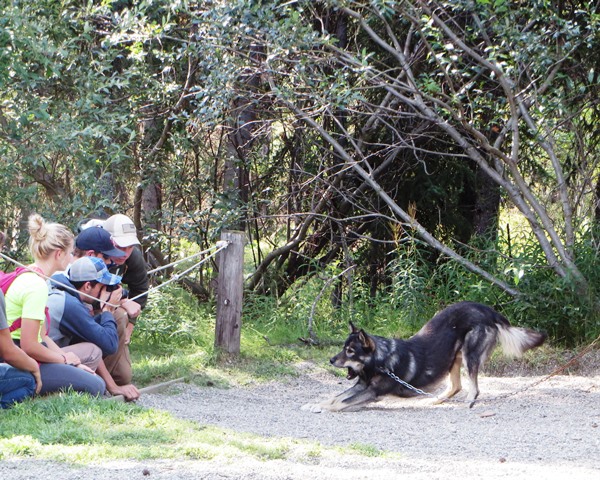
Opus yawns, exhibiting nervous behavior.
However, these can be signs the dog is stressed or nervous and would rather not have your attention at that time. Our dogs see about 50,000 visitors every summer season. Can you imagine what it would be like to be looked at and petted by that many people? Yeesh! Probably pretty tiring, huh?
Some of our dogs do better than others with visitors, but as you can imagine some of our dogs get a little tired of all the attention.
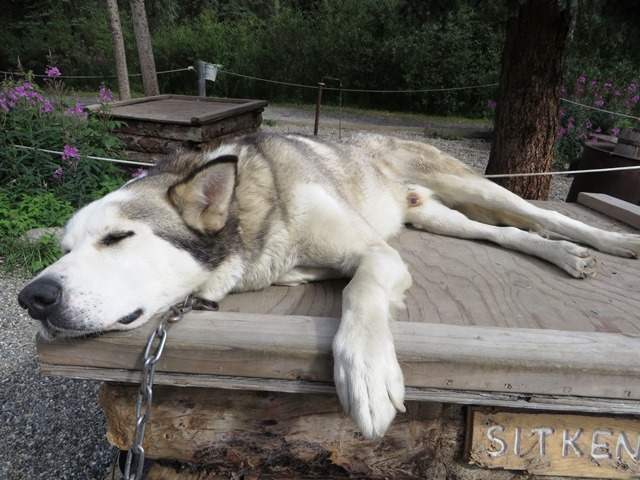
One thing we pay a lot of attention to in our kennels is how the dogs react to children. We carefully breed and socialize our dogs to be friendly with everyone they meet here. However, we ask parents to always exercise care and caution when bringing young children into our dogyard. Even the best behaved dogs can quickly get overwhelmed by excited kids.
Children should NEVER be left unattended in a dogyard. Please keep infants away from a dog’s face. Their crying and squeaking noises can elicit a strong response in the dogs.
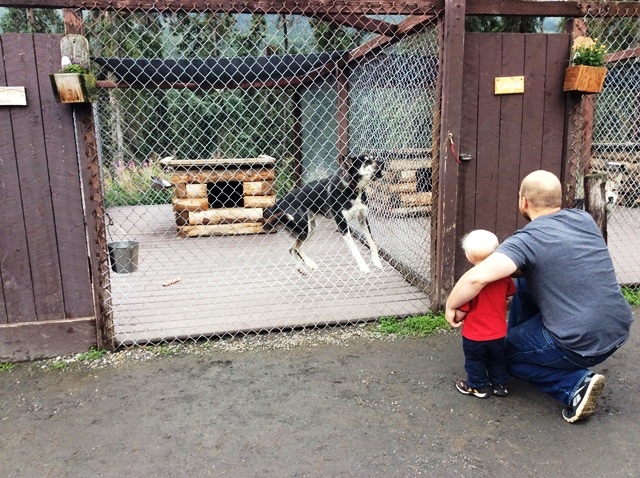
Timber barks at a young visitor and his father.
Some of our dogs are not fans of kiddos at all. Anytime you see a dog directly barking towards you or a child, this means the dog is uncomfortable with you or the child and you should move away from the dog entirely. Do you have a family member, maybe a brother or an aunt, who never had kids or doesn’t particularly care for being around children? This comparison can be made with our dogs as well. Some of them just aren’t cut out to be summer camp counselors!
The next time you find yourself in our kennel, or around any dog(s) keep these tips in mind:
• Let dogs come to you, and sniff you before you pet them.
• Barking, yawning, panting = Nervous behaviors. Action to take = Move away from the dog(s).
• Always have attentive parental supervision when children are interacting with dogs.
• Refrain from running or making fast movements around dogs; this can startle or frighten them.

Socialization with dogs is healthy for humans. Dogs help us to reduce stress, create a feeling of companionship, and give us memorable experiences. But, these interactions are also extremely beneficial to our dogs. By having different types of positive human interactions it allows dogs to trust us, get used to various people, and receive praise for good behavior – which encourages good behavior in the future. And that is always our goal here at the Denali Kennels: to create positive experiences for you and the dogs.
